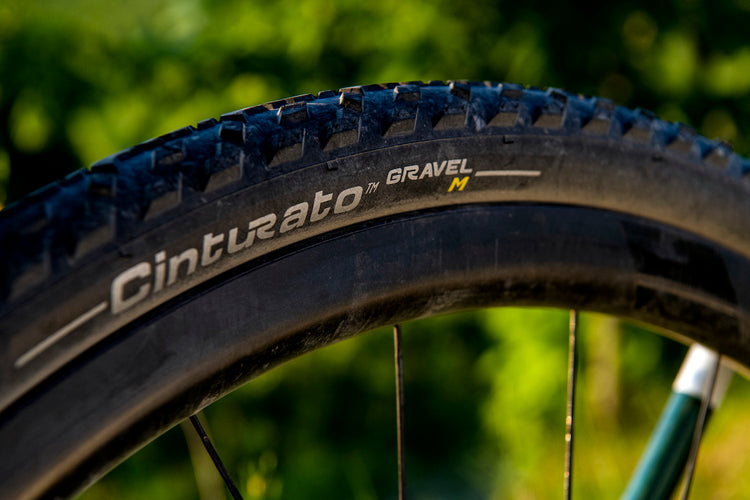Choosing the optimal tires for your Gravel Bike

Choosing tires for your gravel bike is a crucial and complex aspect to consider. In the world of gravel riding, these components play a fundamental role as they significantly influence the performance and handling of your bike. Furthermore, unlike racing bikes, in gravel we are faced with a wide range of options in terms of size, tread, section and even diameter of the wheels.
To avoid compromising performance and fun during your gravel rides, it is essential to pay attention to this choice. Each type of tire is optimized for specific conditions of use, and choosing a tire that is not suited to your primary driving style can have negative consequences.
In this article, we will divide the main factors to consider into distinct chapters, offering you a complete guide to choosing the ideal tires for your gravel bike.
Tubeless or inner tube? In the world of gravel, the use of the tubeless system is the unquestionable choice. In off-road terrain, tubeless tires allow you to reduce pressure, offering greater grip, comfort and stability, thanks to less wheel bounce. In addition to performance, tubeless significantly reduces the risk of punctures and cuts.
Tread Type Gravel riding lends itself to different interpretations, and the variety of tread types reflects this diversity. In general, we can identify three macro categories of tyres:
-
Sliding (Slick): These tires are suitable for those who use gravel mainly on asphalt and well-compacted dirt terrain, especially in dry conditions. They offer high smoothness on asphalt but are not suitable for technical or muddy terrain.
-
Intermediates: This category includes versatile tyres, ideal for those who frequently alternate between asphalt and dirt roads, sometimes even with uneven surfaces. The central part of the tread offers good sliding, while the lateral studs guarantee stability when cornering. However, these tires may have limitations in muddy terrain.
-
Aggressive: These tires with a more pronounced tread are ideal for those who practice gravel more intensely, sometimes approaching MTB trail riding. They offer greater grip but sacrifice smoothness, especially on well-compacted soil. They are the best choice for fall or winter conditions, where the ground may be muddy.
Tire Section Tire section has a significant impact on comfort, stability and safety, especially on rough terrain. The most common sizes vary from 37 to 40 mm as they offer an optimal balance between different factors. However, you can adjust the section to suit your route. If you ride mostly asphalt, you can opt for thinner tires like 700x35 or even 700x30-32. On the other hand, if you prefer off-roading or want greater comfort, you could opt for wider tires, as long as your bike can accommodate them.
Tire pressure Tire pressure is a complex topic and varies depending on the type of terrain, your weight, and the model of your tires. In general, it is advisable not to overinflate your tires as lower pressure, especially off-road, offers greater comfort, grip and control. However, on asphalt, very low pressures can compromise smoothness.
650B Tires Many recent gravel bikes are compatible with 650B tires, which are smaller in diameter than traditional 28" road bike wheels. These tires allow the use of wider tires (up to 650x50) with a shoulder This allows you to ride at lower pressures and increases air volume, offering superior comfort and a more MTB-like ride. This option is ideal for rough trails and bikepacking adventures where comfort is a priority over weight. and smoothness.
Mousse (Inserts) Inserts, known as "mousse," are used in MTB, particularly Enduro and Trail. Recently, they have started to appear in gravel as well. These synthetic material inserts are inserted inside the tubeless tires and serve to support the rubber, allowing lower pressures for better grip and protecting against punctures and damage to the rim in the event of violent impacts. They can even allow you to ride a few miles with a punctured tire, allowing you to get home safely.
In conclusion, the choice of tires for your gravel bike depends on the type of terrain you intend to use it on. Consider your percentage of asphalt to dirt terrain, the variety of conditions, and the level of aggressiveness of your driving. Choose tires that suit your style and the type of terrain you frequent. This choice can make a significant difference in your gravel riding experiences.
